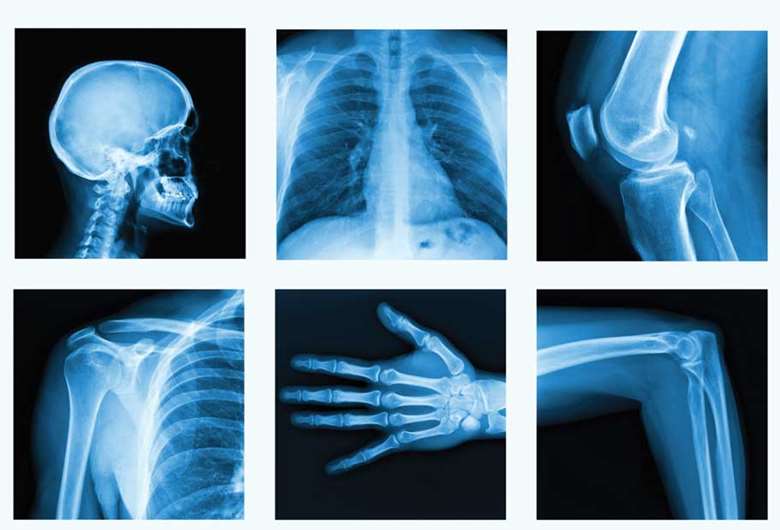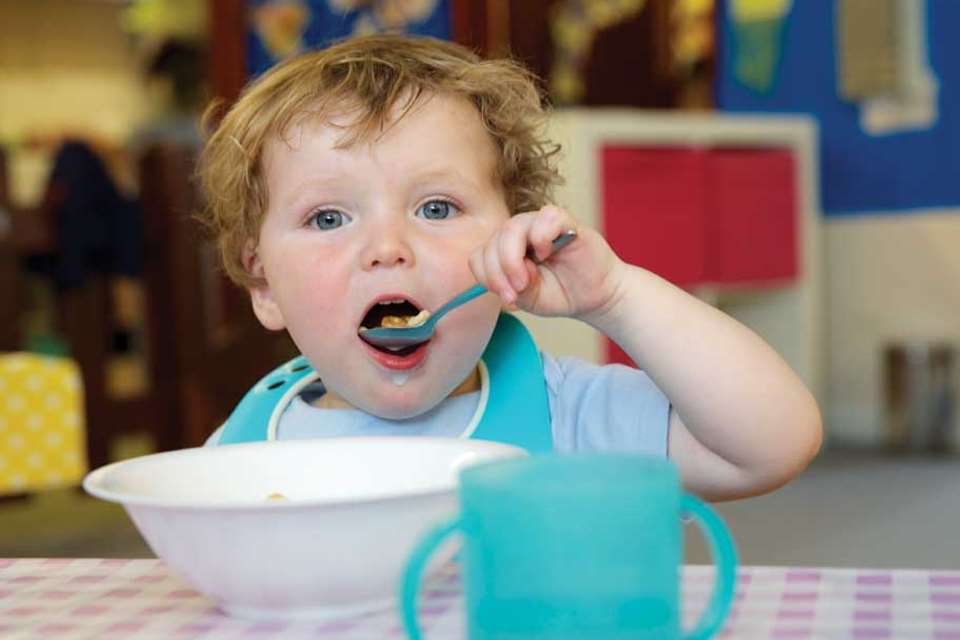Enabling Environments: Let's explore ..bones
Marianne Sargent
Monday, September 22, 2014
The component parts of the human skeleton are a good starting point for educating children about staying healthy, says Marianne Sargent

A topic on bones and skeletons is the ideal way to teach young children the importance of a balanced diet, regular exercise and staying safe.
BONY BODIES
Use a life-size anatomical skeleton model to find out about all the different bones in the human body.
Adult role
- - Work with small groups. Examine the skeleton together. Identify the different bones. Compare their shapes and sizes.
- - Invite the children to feel around their own bodies and find various bones. Can they feel the shapes of the bones in their fingers? Can they feel the vertebrae in their necks? Can they wrap their hands around their skulls? Can they feel their eye sockets?
- - Use information books to find out how bones move. Explain that bones are held together by strong straps of tissue called ligaments. We are able to move our bones using our muscles, which are attached by tendons. We use our muscles to pull our bones back and forth.
- - Invite the children to stand up and move their arms and legs around. Encourage them to use their hands to feel their muscles pulling beneath their skin.
- - Explain that with exercise our muscles become stronger and this makes it easier to move our bones.
Learning opportunities
CL: Extends vocabulary, especially by grouping and naming, exploring the meaning and sounds of new words.
PD: Observes the affect of activity on their bodies.
UW: Can talk about the human skeleton and how the body moves; develops an understanding of growth and change.
STRONG BONES
Find out how to keep bones strong and healthy.
Adult role
- - Explain that people need to have a healthy lifestyle to keep their bones strong. This means regular exercise and a balanced diet.
- - Explain that bones get stronger when you use them. The types of exercise that make bones strong are those that involve walking, running, skipping and jumping.
- - Involve the children in planning some physical activities that will help to strengthen their bones.
- - Explain that bones need a substance called calcium to stay strong. This means we need to eat foods that contain calcium. Show the children a selection of calcium-rich foods. Ask them which they recognise and like to eat at home.
- - Tell the children that they need to eat a balanced diet that contains different foods because different substances and vitamins all work together to do their jobs properly. In this case vitamin D is needed to help our bodies absorb calcium. Show the children a selection of foods that contain vitamin D. Explain that we also get vitamin D when sunlight soaks into our skin.
- - Involve the children in helping you to choose snack time foods that contain calcium and vitamin D.
Learning opportunities
CL: Is beginning to understand 'why' and 'how' questions.
PD: Knows the importance for good health of physical exercise and a healthy diet, and talks about ways to keep healthy.
UW: Can talk about why things happen and how things work.
BROKEN BONES
Find out what happens when we break a bone.
Adult role
- - Explain that our bones can be broken if we put too much strain on them. This usually happens when we have an accident, like falling from a height or hitting something hard.
- - Ask the children if any of them have ever broken a bone. Invite them to share their experience. How did it happen? Which bone got broken? What did it feel like? Did they go to hospital in an ambulance? What was it like having an X-ray? What did the doctors do to fix the bone?
- - If possible, invite a healthcare worker to the setting to talk to the children about what happens when they break a bone. Otherwise tell the children what happens at accident and emergency. Explain the purpose of having an X-ray and watch a video of a child having one.
- - Explain that bones are usually fixed with the help of a plaster cast. This holds the bone together in the correct position so that it can mend itself. If the break is really serious the doctors might have to use metal pins to help hold it together. People who are recovering from a broken bone often need physiotherapy, where they learn special exercises to help strengthen the part of the body that was affected.
- - Take the children somewhere that they can use climbing equipment. Practise climbing, dismounting, jumping and landing safely. All the time, help them to consider the risks and how they can lessen their chance of getting hurt.
Learning opportunities
PSED: Is confident to speak in a familiar group.
CL: Uses talk to re-live their past experiences.
PD: Begins to recognise danger; shows understanding of the need for safety when tackling new challenges, and considers and manages some risks.
UW: Can talk about why things happen and how things work.
Dem Bones songThe foot bone's connected to the leg bone,
The leg bone's connected to the knee bone,
The knee bone's connected to the thigh bone,
Now do that skeleton dance.
Chorus
Dem bones, dem bones, dem dry bones,
Dem bones, dem bones, dem dry bones,
Dem bones, dem bones, dem dry bones,
Doing the skeleton dance.
The thigh bone's connected to the hip bone,
The hip bone's connected to the back bone,
The back bone's connected to the neck bone,
Now do that skeleton dance.
Repeat chorus.
]]








